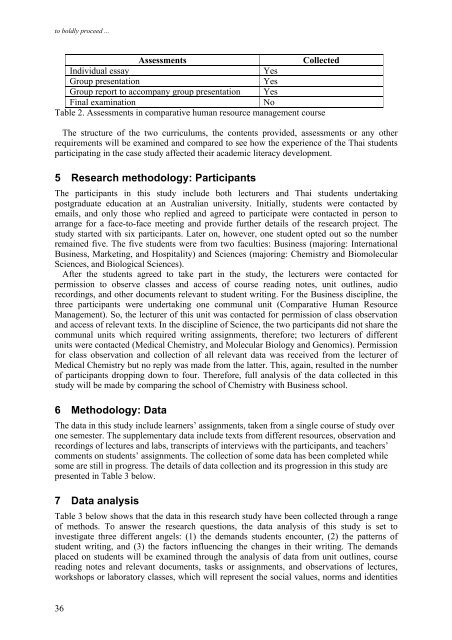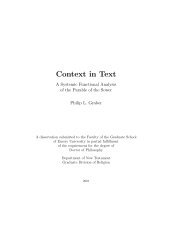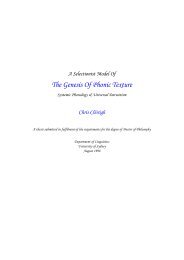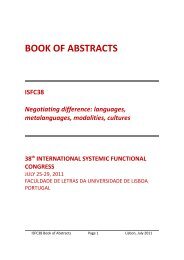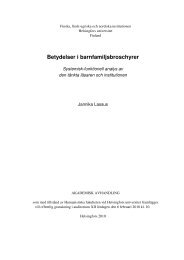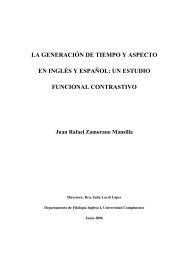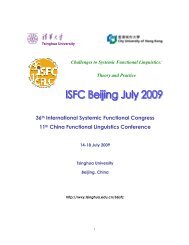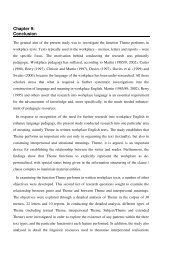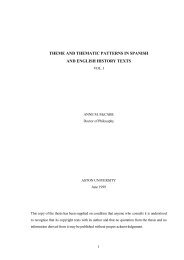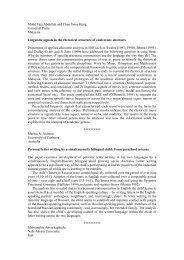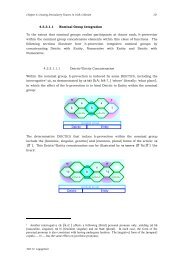the ISFC39 Proceedings - International Systemic-Functional ...
the ISFC39 Proceedings - International Systemic-Functional ...
the ISFC39 Proceedings - International Systemic-Functional ...
You also want an ePaper? Increase the reach of your titles
YUMPU automatically turns print PDFs into web optimized ePapers that Google loves.
to boldly proceed ...AssessmentsCollectedIndividual essayYesGroup presentationYesGroup report to accompany group presentation YesFinal examinationNoTable 2. Assessments in comparative human resource management courseThe structure of <strong>the</strong> two curriculums, <strong>the</strong> contents provided, assessments or any o<strong>the</strong>rrequirements will be examined and compared to see how <strong>the</strong> experience of <strong>the</strong> Thai studentsparticipating in <strong>the</strong> case study affected <strong>the</strong>ir academic literacy development.5 Research methodology: ParticipantsThe participants in this study include both lecturers and Thai students undertakingpostgraduate education at an Australian university. Initially, students were contacted byemails, and only those who replied and agreed to participate were contacted in person toarrange for a face-to-face meeting and provide fur<strong>the</strong>r details of <strong>the</strong> research project. Thestudy started with six participants. Later on, however, one student opted out so <strong>the</strong> numberremained five. The five students were from two faculties: Business (majoring: <strong>International</strong>Business, Marketing, and Hospitality) and Sciences (majoring: Chemistry and BiomolecularSciences, and Biological Sciences).After <strong>the</strong> students agreed to take part in <strong>the</strong> study, <strong>the</strong> lecturers were contacted forpermission to observe classes and access of course reading notes, unit outlines, audiorecordings, and o<strong>the</strong>r documents relevant to student writing. For <strong>the</strong> Business discipline, <strong>the</strong>three participants were undertaking one communal unit (Comparative Human ResourceManagement). So, <strong>the</strong> lecturer of this unit was contacted for permission of class observationand access of relevant texts. In <strong>the</strong> discipline of Science, <strong>the</strong> two participants did not share <strong>the</strong>communal units which required writing assignments, <strong>the</strong>refore; two lecturers of differentunits were contacted (Medical Chemistry, and Molecular Biology and Genomics). Permissionfor class observation and collection of all relevant data was received from <strong>the</strong> lecturer ofMedical Chemistry but no reply was made from <strong>the</strong> latter. This, again, resulted in <strong>the</strong> numberof participants dropping down to four. Therefore, full analysis of <strong>the</strong> data collected in thisstudy will be made by comparing <strong>the</strong> school of Chemistry with Business school.6 Methodology: DataThe data in this study include learners’ assignments, taken from a single course of study overone semester. The supplementary data include texts from different resources, observation andrecordings of lectures and labs, transcripts of interviews with <strong>the</strong> participants, and teachers’comments on students’ assignments. The collection of some data has been completed whilesome are still in progress. The details of data collection and its progression in this study arepresented in Table 3 below.7 Data analysisTable 3 below shows that <strong>the</strong> data in this research study have been collected through a rangeof methods. To answer <strong>the</strong> research questions, <strong>the</strong> data analysis of this study is set toinvestigate three different angels: (1) <strong>the</strong> demands students encounter, (2) <strong>the</strong> patterns ofstudent writing, and (3) <strong>the</strong> factors influencing <strong>the</strong> changes in <strong>the</strong>ir writing. The demandsplaced on students will be examined through <strong>the</strong> analysis of data from unit outlines, coursereading notes and relevant documents, tasks or assignments, and observations of lectures,workshops or laboratory classes, which will represent <strong>the</strong> social values, norms and identities36


